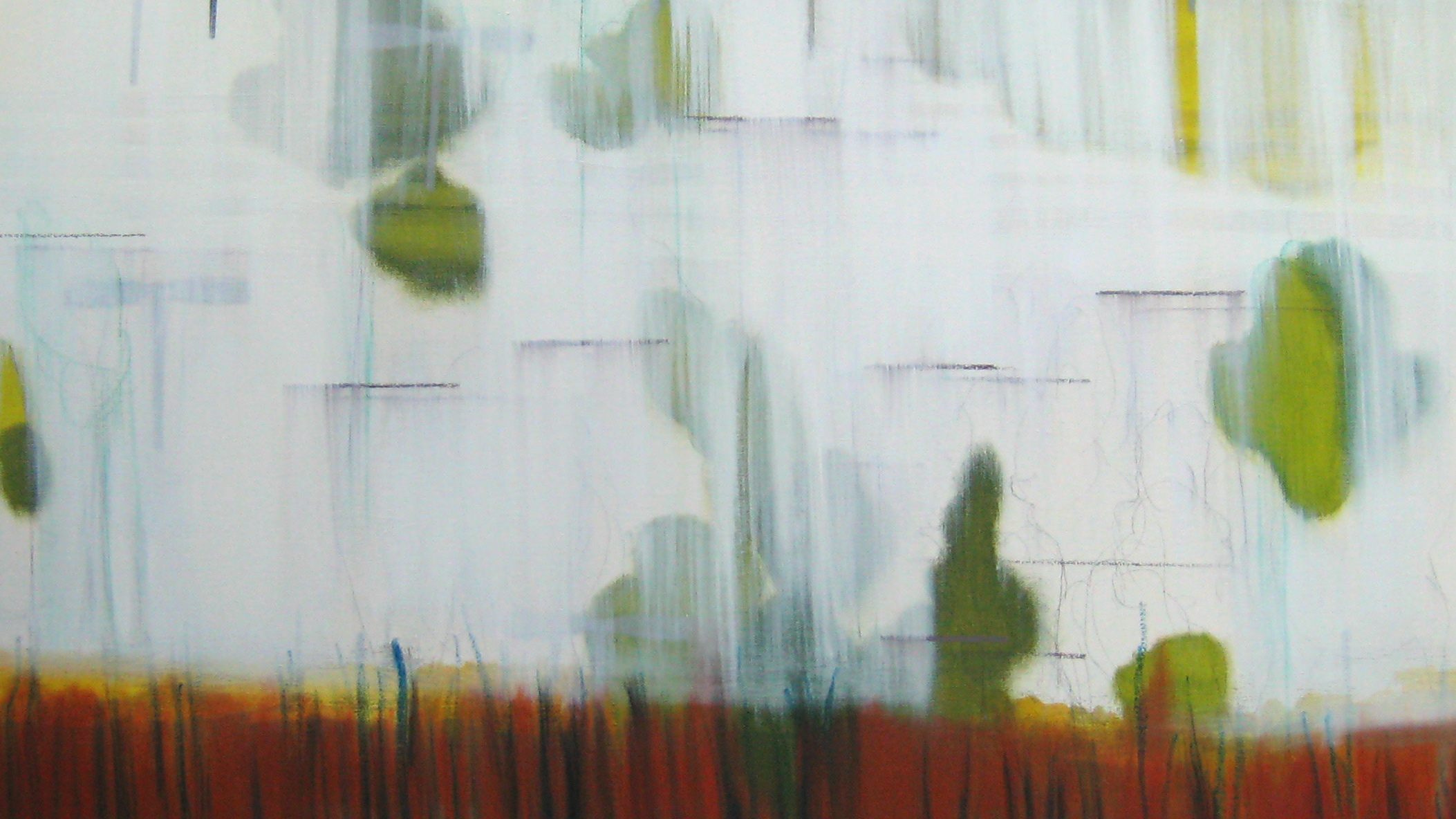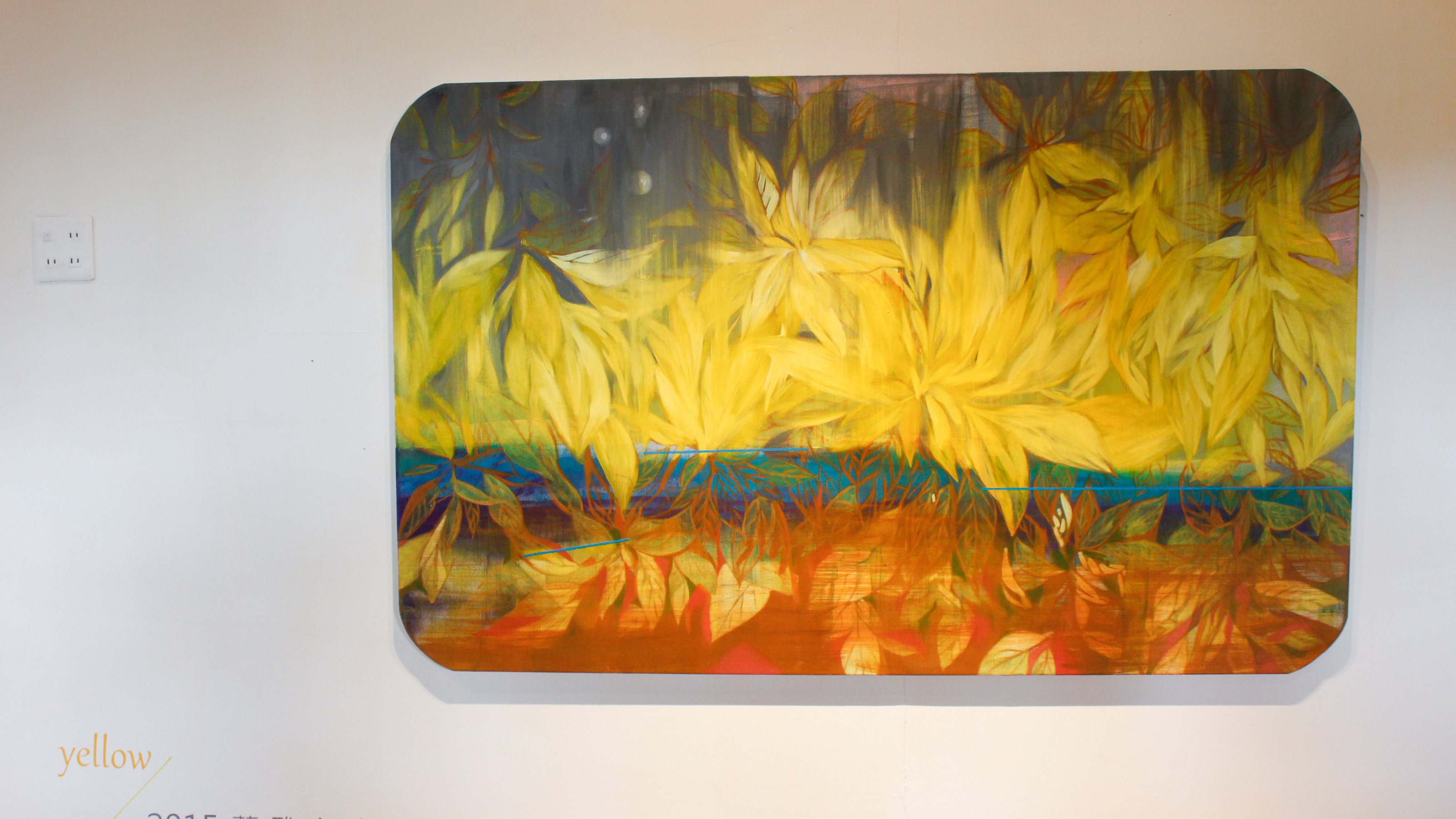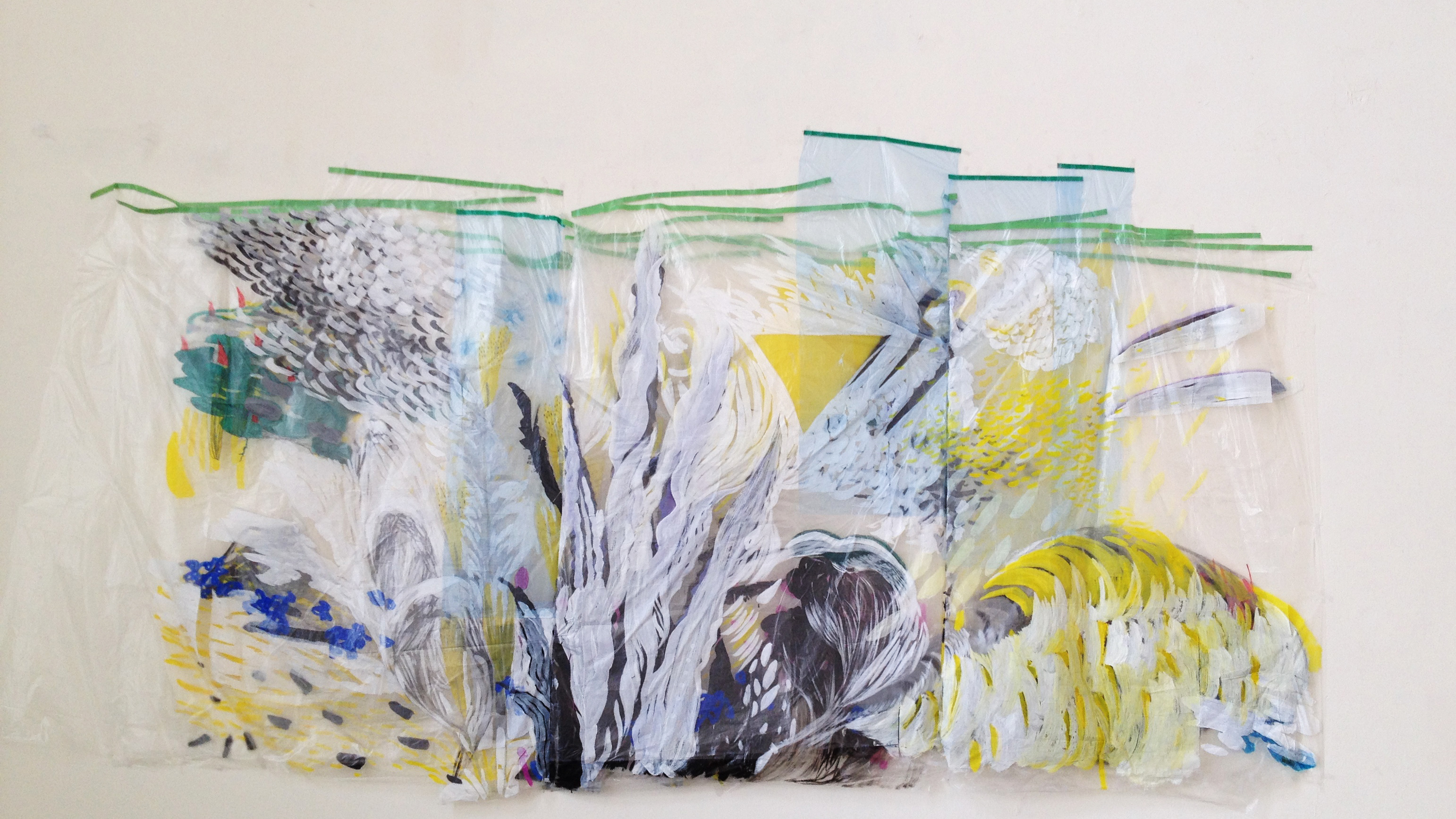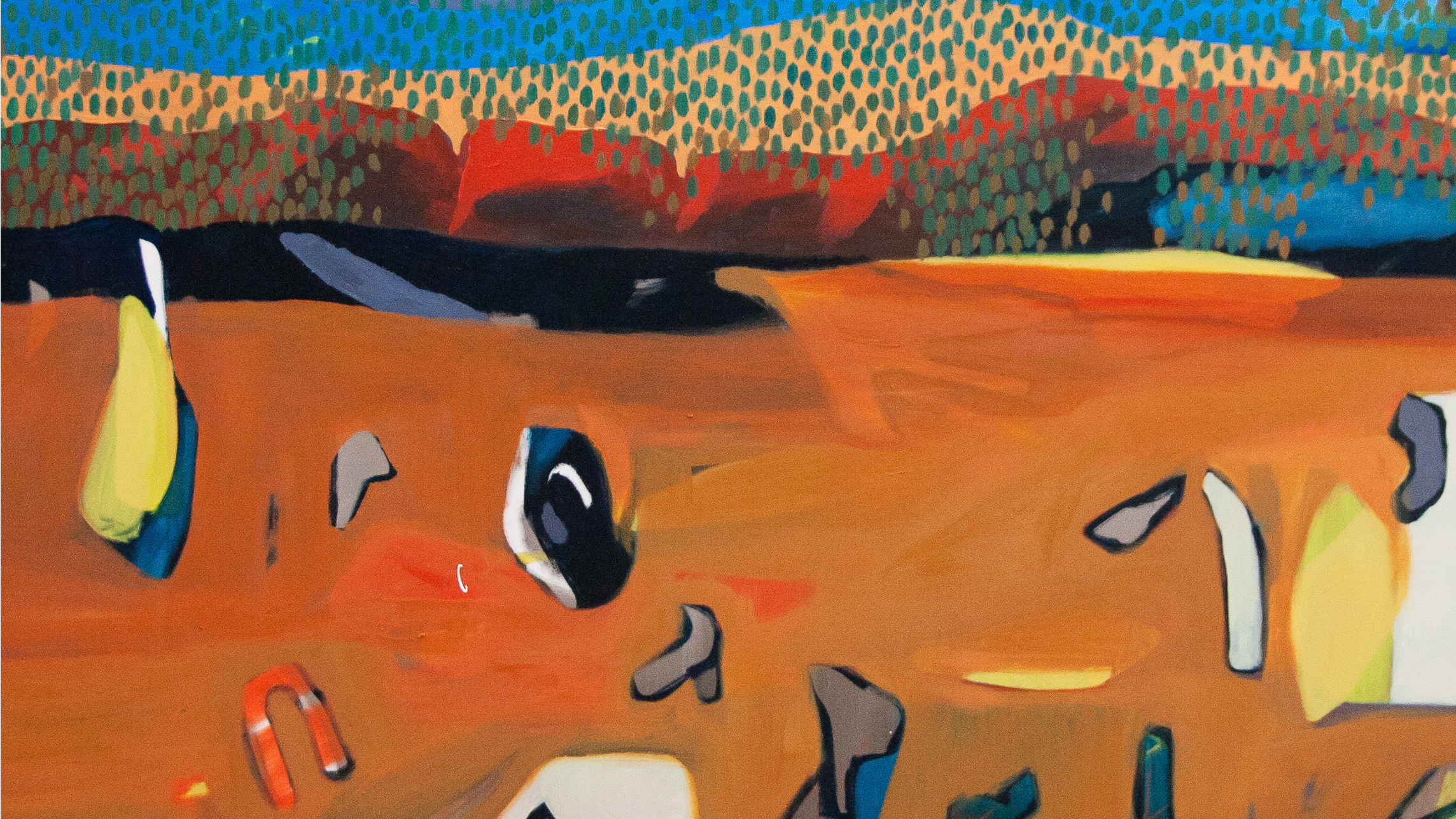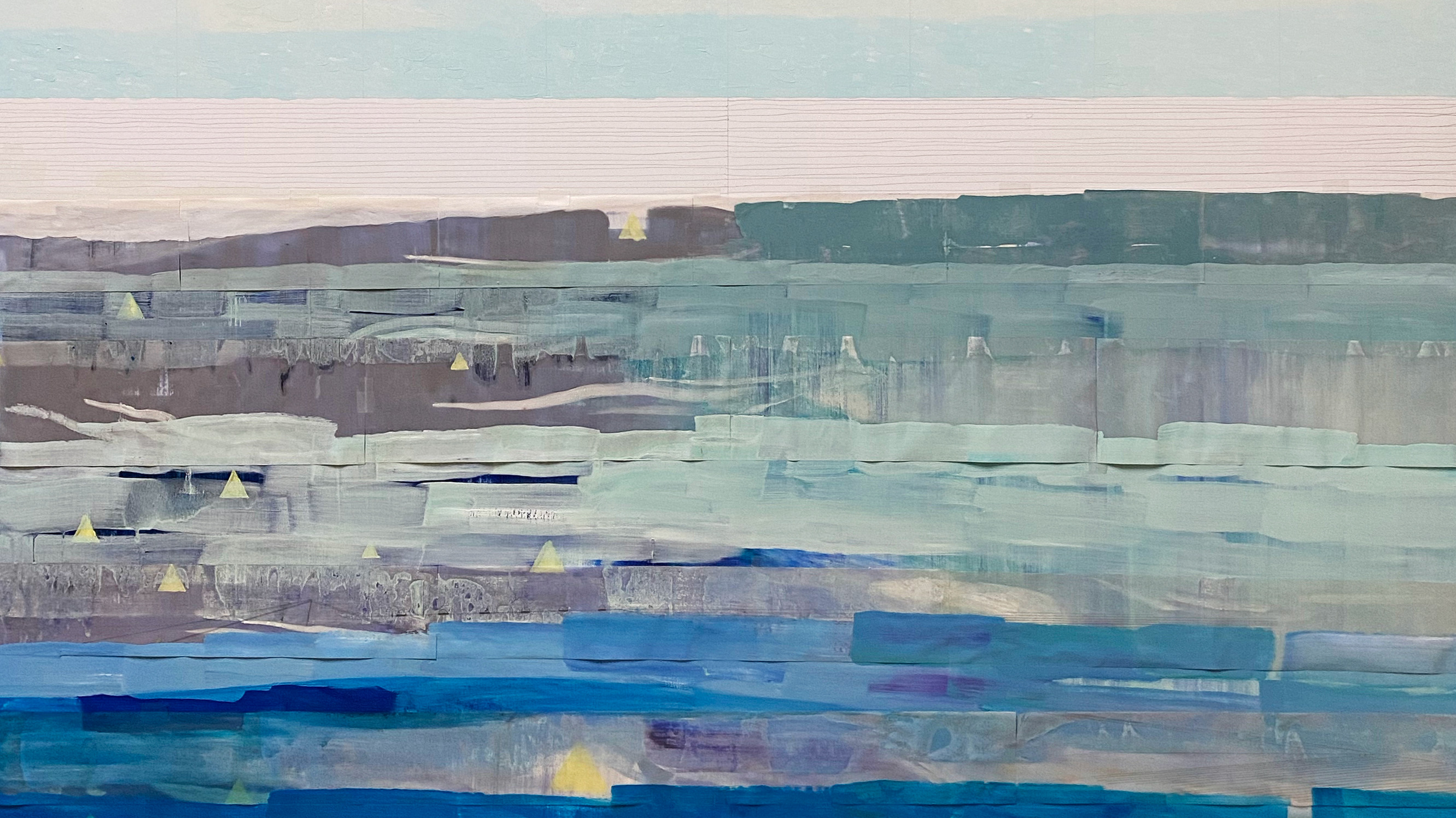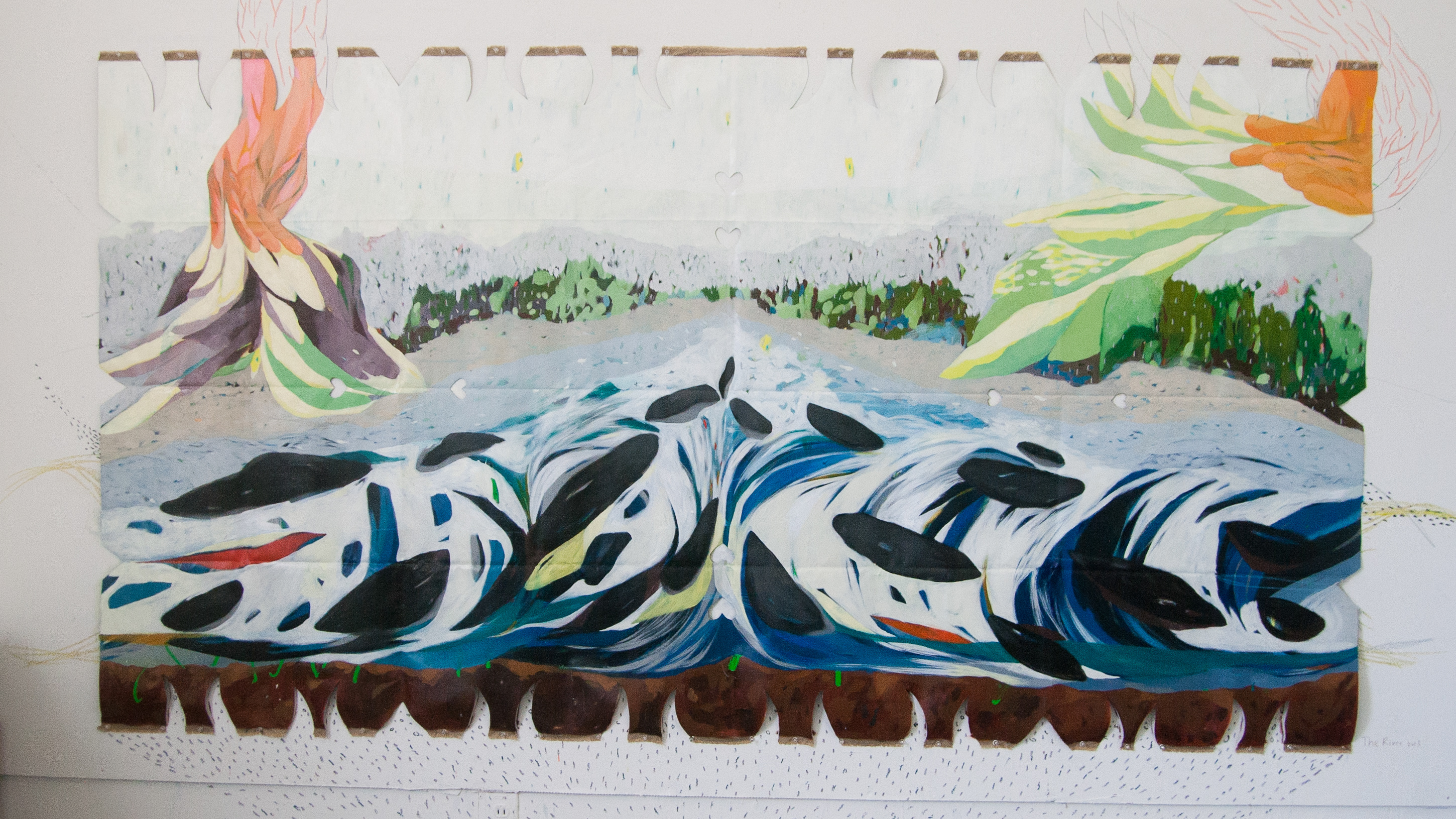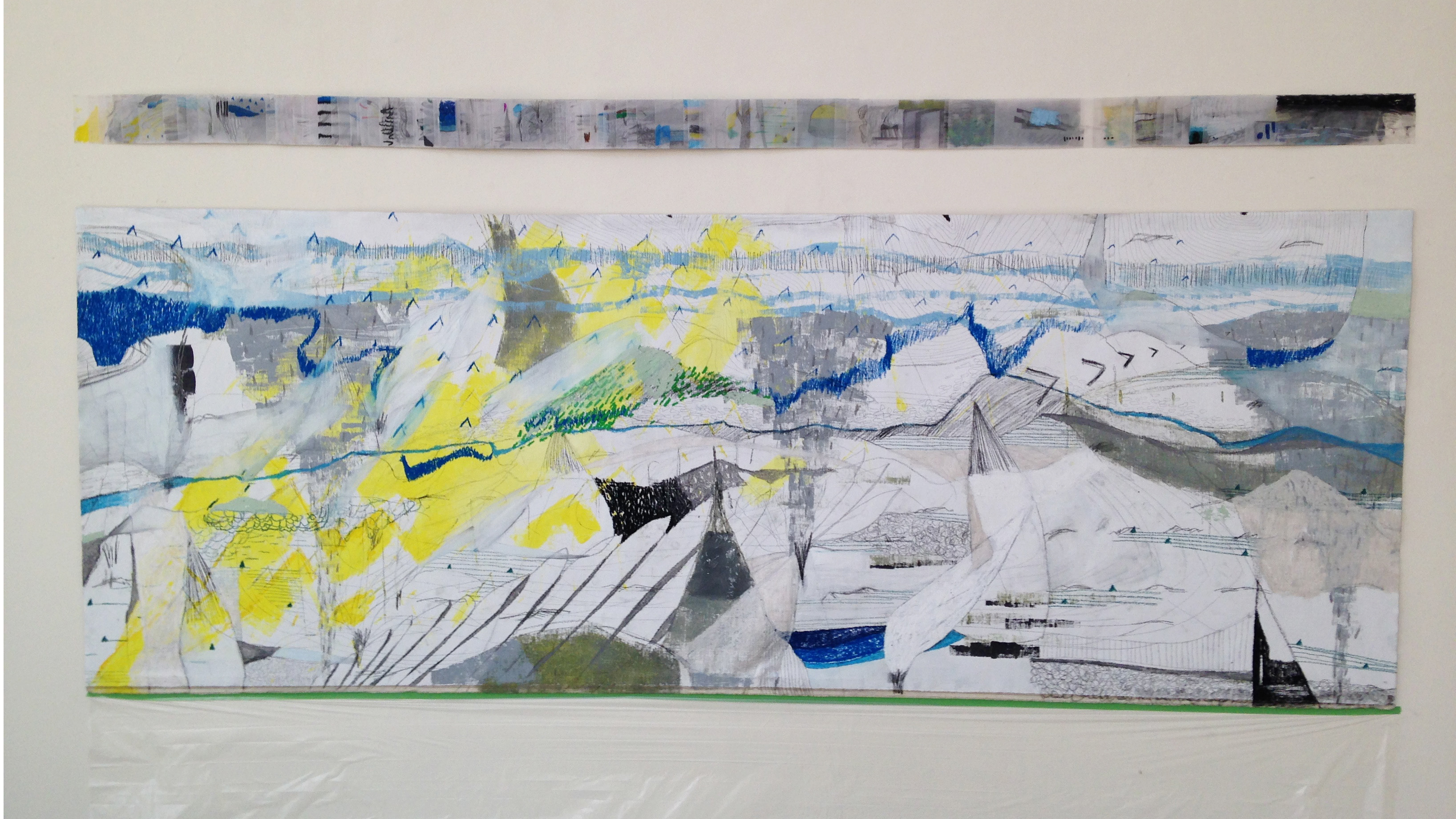過去的海,未來的山,現在的我們。
2021
壓克力,描圖紙、養生膠帶,128 x 291cm
此次現地製作的環境是在飯店房間的窗戶,是中間一大窗,左右兩邊各有一個小窗的樣式。我想以中世紀基督教藝術常使用的三聯畫(τρίπτυχοs)為創作形式,採取一體的形式來表達這個分割的空間。
若時間的概念不再是線性的、因果式的結局,而是採用環型的時間軸線,類似莫比烏斯環,沒有開始也沒有結束點,那麼過去現在未來都在一瞬間碰撞,合為一。
我以「過去的海,未來的山,現在的我們」這個標題來作為時間和空間的想像,而過去的海指的也可以是現在的山,未來的山則暗指過去的海。好比我們倒立看這個世界,整個地平線上的突起物翻轉到下面,而海平面以下的深淵翻轉到上面,看起來也是一個世界呢。
◆
The sea in the past, the mountains in the future, the present us.
2021
acrylic, tracing paper, transparent sheet, 128 x 291cm
The environment made on-site is in the window of the room, which is a large window in the middle, with a small window on the left and right sides. I try to take the form of the triptych (τρίπτυχοs) often used in medieval Christian art, and adopt a unified form to express this divided space.
If the concept of time is no longer a linear, cause-and-effect ending, but a circular axis of time, similar to the Möbius ring, with no beginning and no end point, then the past, present and future will collide in an instant and become one.
I use the title "The sea in the past, the mountains in the future, the present us" as an imagination of time and space. The sea in the past can also refer to the mountains in the present, while the mountain of the future alludes to the sea of the past. It is as if we look at the world upside down, the entire horizon is turned down and the abyss below the sea level is turned up, and it looks like a world too.



